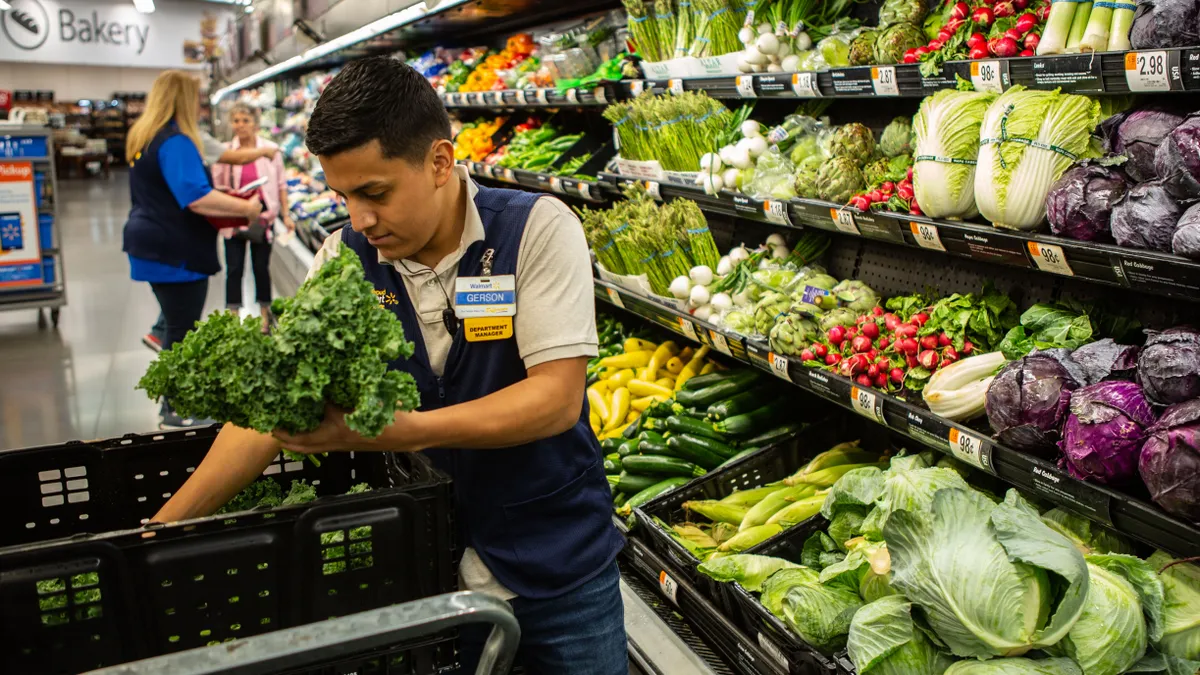Dive Brief:
- Walmart has surpassed Instacart in online grocery customers, according to research from data company Second Measure, with 62% more shoppers using the retailer's pickup and delivery services in June than the e-commerce provider, it's nearest competitor in the space.
- Although it offers online grocery in nearly every state, Walmart dominated digital market share in major metropolitan areas including Dallas-Fort Worth (59%), Phoenix (56%), Houston (39%) and Atlanta (35%). Instacart is dominant in Los Angeles (42%), Miami (45%), San Francisco (40%) and Washington, D.C. (35%).
- Sales for AmazonFresh were down 19% compared to last year, while Amazon Prime Now experienced a three-fold increase in sales. Since Target acquired Shipt in 2017, Shipt has seen a 69% increase in customers, the research found.
Dive Insight:
Walmart is making major strides in online grocery in part because of its unparalleled brick-and-mortar footprint. The retailer has more existing store locations throughout the U.S. than any other retailer, giving it an advantage when it comes to offering pickup locations and delivery fulfillment for online orders.
Second Measure's research is yet another testament to Walmart's strength as a retailer. A recent report from the Institute for Local Self-Reliance found that Walmart captures 50% or more of grocery sales in 43 metropolitan areas and 160 smaller markets in the U.S., with a 70% share or more of grocery in 38 of these regions.
Walmart's ubiquitous success has yet to permeate one key battleground: New York City. FreshDirect is the primary operator in the Big Apple, claiming 31% of the city's online shopper traffic, according to Second Measure. AmazonFresh was the next most frequently used service in the Big Apple (20%) followed by Amazon Prime Now, with 18% of the market share. Walmart and New York City have had a contentious past, reflected best in former mayor Bill de Blasio’s 2014 statement that the retailer wasn’t welcome in the city. It finally made inroads with same-day delivery through Jet.com.
The survey also concluded that losing Whole Foods as a customer didn't hurt Instacart. The Whole Foods-Instacart relationship formally ended in May, but Instacart had 23% more customers in June than it did when it announced that it would no longer make deliveries for Whole Foods.
Amazon continues to play a role in the online grocery segment, but Second Measure's data suggests the retailer's two-pronged approach may be creating challenges. While Prime Now has expanded its footprint to 90 cities, AmazonFresh is only available in 15 cities, most recently expanding to Las Vegas. Prime Now is making a positive impression on consumers, receiving some of the highest ratings in a recent Consumer Reports survey assessing grocery delivery services. AmazonFresh, on the other hand, received some of the lowest marks.
Despite the polar opposite performance of its two grocery delivery brands, Amazon overall is still capturing a large share of online food and beverage sales, accounting for 30% of all online grocery spending in the U.S., according to a survey from Brick Meets Click.












